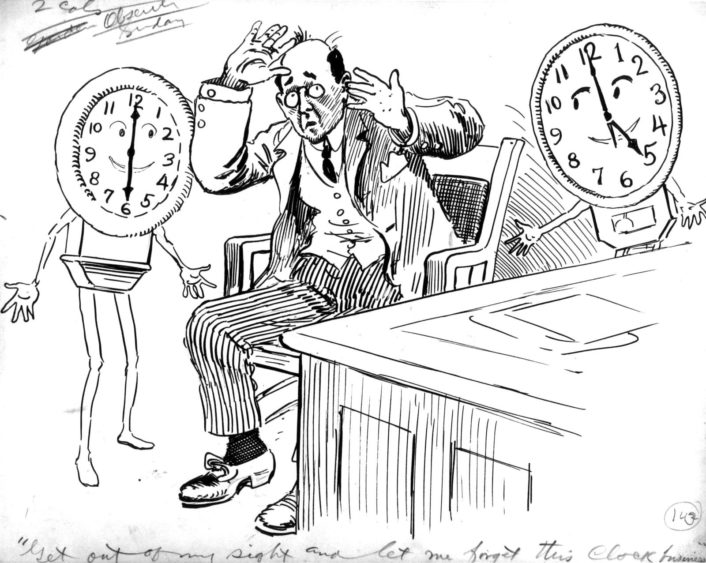Time change debate wages on despite widespread annoyance, voter demand
Some history on daylight saving time and a look at where it stands. Despite 19 states voting for permanent DST, clocks again fall back Sunday.
Some history on daylight saving time and a look at where it stands. Despite 19 states voting for permanent DST, clocks again fall back Sunday.
It’s that time of year again, when the thrill of an extra hour of sleep is quickly overshadowed by frustration when darkness arrives early. Yes, it’s time to set clocks back despite widespread annoyance with the antiquated practice.
We officially fall back at 2 a.m. Sunday, so be sure to change the time on the microwaves and ovens before you fall asleep.
You may recall that Californians voted in 2018 to do away with seasonal changing of the clocks. But Proposition 7, which passed with nearly 60 percent of the vote, merely gave the State Legislature power to change the daylight saving time period or make it permanent as permitted by federal law. The problem is that federal law doesn’t allow for the latter, at least not yet.
It requires a little trip through history to understand why we are still debating time manipulation today. For that complex story, we defer to the expertise of David Prerau, who authored “Seize the Daylight: The Curious and Contentious Story of Daylight Saving Time.” According to Prerau, DST was originally implemented in Germany as a way to conserve fuel during World War I, which then became broadly adopted throughout Europe — the U.S. followed suit in 1918.

Contrary to the myth that DST was established for the benefit of agricultural workers, farmers actually led the opposition charge and pressured former President Woodrow Wilson to abolish DST in the U.S., according to Prerau.
Another war would bring DST back into the mix, in a big way. As WWII kicked into gear in February of 1942, then-President Franklin Roosevelt established year-round DST, calling it “War Time.”
The time issue got pretty wonky after the war when states and towns were given the choice to observe DST or not, and to make their own policies for how and when it would be observed. The Uniform Time Act of 1966 was enacted in order to rein in the free-for-all chaos of those independent decisions.
That brings us to today as we approach yet another time change in the modern era where lighting has far less impact on our energy resources than it did when DST first rolled out.
According to The Economist/YouGov polling conducted between Oct. 30 and Nov. 2, the majority of Americans — 63 percent — would prefer to never change clocks again. The poll shows the preference to eliminate the seasonal time change increases substantially with age. When asked which time setting they would like to keep permanent, 48 percent chose DST and 29 percent went with standard time — nearly a quarter of respondents had no preference or weren’t sure.
One of my least favorite times of the year is November, when Daylight Savings Time goes away. Let’s pass the Sunshine Protection Act to save an hour of sunlight. pic.twitter.com/fUYAHZQ0Pb
— Sheldon Whitehouse (@SenWhitehouse) November 5, 2021
According to the National Conference of State Legislatures, California is one of 19 states where voters in the last four years have chosen to keep DST as the permanent time setting. However, that particular change requires an act of Congress. On the flip side, states can opt out of DST entirely without the same federal bureaucracy — Hawaii and Arizona have chosen that option.
California lawmakers have been debating the time issue since Prop 7 passed, some citing sleep experts and medical professionals who see standard time as the healthiest option. The debate wages on in Congress where a bipartisan coalition of senators are pushing for passage of the Sunshine Protection Act of 2021, which would make DST the one and only permanent time setting nationwide. However, opposition is also bipartisan.
Most voters and politicians favor eliminating time changes — what we lack is consensus on how to go about doing that.
The northbound lanes of Interstate 880 through downtown Oakland have been reopened following an investigation involving the shooting of...
An argument at a birthday party in Oakley led to a shooting that left two men dead and two...
A Napa man convicted of trying to kill his wife received a sentence Thursday of 27 years to life...